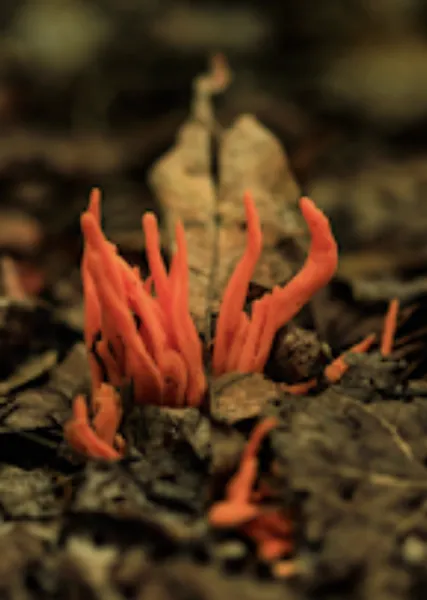November 19, 2024
All creatures big, small, tiny and 'ugly' are needed on this planet: Here's how journalists can cover them.
By Bethany Brookshire and Douglas Main for the Society of Environmental Journalists

An orange fungus grows out of leaf debris in a Maine forest. (Photo by Alyssa Mattei, National Park Service via SEJ)
It's small and somewhat weird, but let's protect it. Say what? If day-to-day environmental journalism is difficult, reporting on barely-known species, which often look like sci-fi inventions, can be more challenging. But it's worth noting that while some species lack the glamour or beauty of creatures "situated toward the apex of the food chain," [apex animals] are nothing without every lesser-loved organism below them," report Bethany Brookshire and Douglas Main for the Society of Environmental Journalists.
What's the best way to describe "seemingly unlovable species and ecosystems to life and get our audiences invested in their stories?. . . Often, the most compelling way to report on the non-human world is to talk about people — about how we are like those creatures or why we need those plants or ecosystems," Brookshire and Main explain. "That might seem a little self-centered. But looking closer, it becomes clear that what this kind of coverage cultivates is not self-obsession. It’s empathy."
Another option is "finding the larger stories that odd species are embedded within," SEJ reports. A National Geographic feature "[looked at] ice worms, tiny invertebrates that live on glaciers and climate change. . . . A slight tweak in the protein that makes ATP, the cellular currency of energy, helps these creatures stay active at very low temperatures. People might not care about ice worms. But they care about the effects of climate change on biodiversity, and they care about potential human benefits from other species’ quirks."
Benji Jones, an environmental correspondent, "believes that another way to get people to care about obscure organisms is to make them characters in a story — as he recently did when writing about Appalachian salamanders," SEJ reports. "That often means emphasizing that these organisms — whether plants or animals or yeast — are really not as different from us as they seem, Jones says. They, too, have wants and needs and challenges. . . . A tree or salamander can’t speak for itself, but the people who care about these species can."
Write with imagination. "It’s harder to get audiences to care about the small, the spineless, the aesthetically unappealing. But seeing ourselves in other creatures sparks curiosity. And from curiosity, it’s only a short step to caring," Brookshire and Main add. "Journalists might have to dig a little deeper to find the common ground humans share with other species. But it’s there if you dig deep enough. Making those connections can open the door to understanding and compassion."